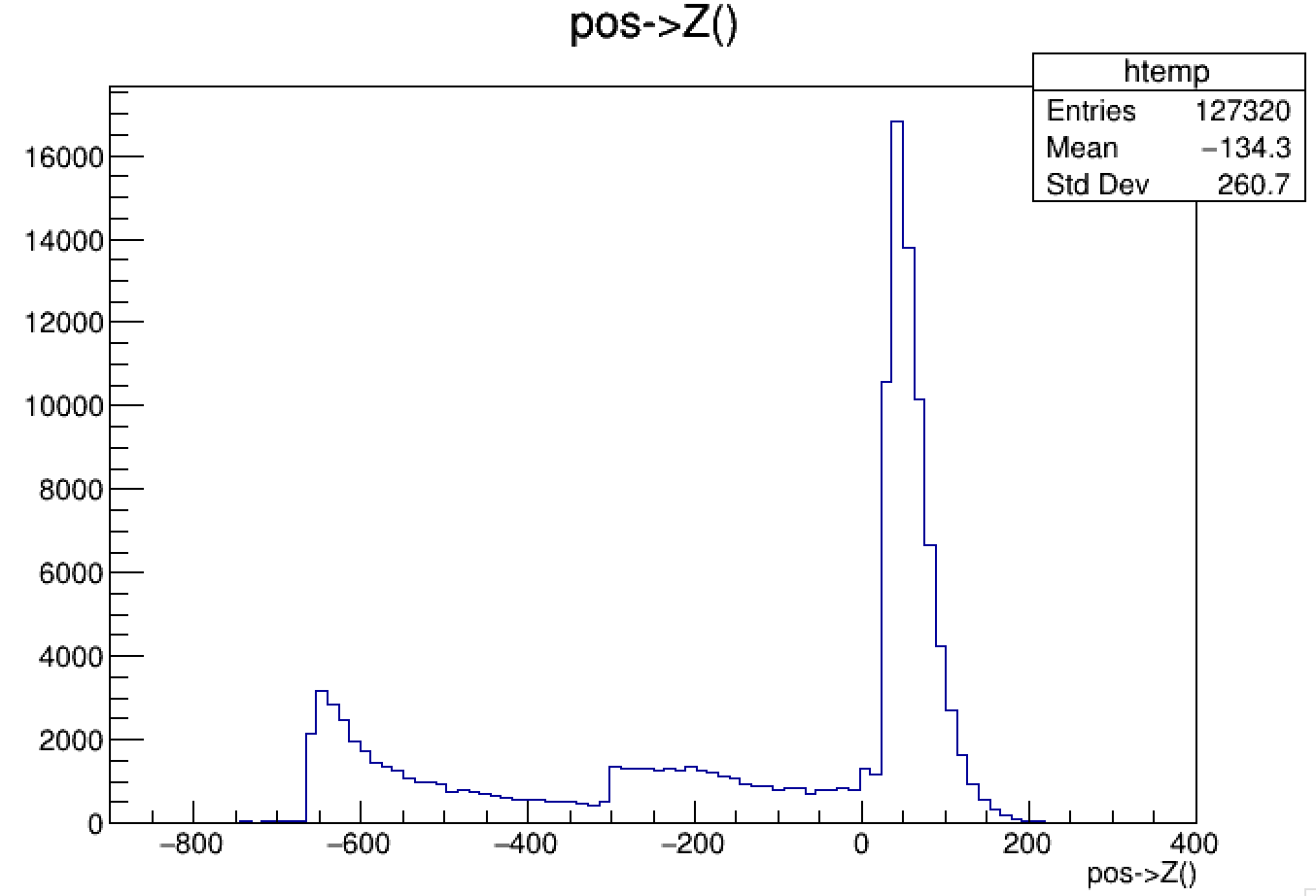Use a mixture of DY, J/psi, and single muon tracks for background tracks (something like 5% DY+J/psi and 95% single muon tracks).
The generated muons should be weighted based on the following Z distribution, which shows the approximate distribution of muons that will be generated in the events.
There should also be partial tracks that traverse part-way through the detector array. These tracks can go through anywhere between 1 and 5 planes of a station.
These should be generated to roughly match the occupancy that we see in Seaquest docdb 9631-v3 in slides 26 and 27 (DC occupancy). The plots show that the occupancy is lower at higher Z (station 1 has higher occupancy than station 3). This means that we should weigh the partial tracks so that there are more going through the first two stations. We are trying to match the occupancy after out-of-time cuts.
Once the full tracks and partial tracks are added, we can add sources of noise: Electronic Noise, Delta Rays, and Cell-Edge Hits. These are not as important for training, because they can mostly be removed by if statements.
We will also use E906 data to compare the generated MC to real experimental data. If the neural networks we train are able to perform equally well on E906 data and MC data, then we know we have good agreement.
Make sure your generator runs fast. Use GPU if needed to accelerate. List here where the final generator is on Shannon.
Make sure that Drift information is in data.
An Outline of what the Event based MC should entail:
All the possible regions of the vertex should be generated, like more that 10 cm X and Y with uniform distribution and Z with the above distribution.
The regions before the -300 are from the collimator and upstream components. Pay attention only to the blue line (after in-time cuts) from doc 9631.
The number of planes and stations should be randomized that a partial track traverses resulting in 1, 2, and 3 plans of a station.
Partial tracks should also be made to go through one full station but only 1, or 2 planes of the next station.
a.) Produce several spills (~100) each around 50K with 10% dimuon, 70% single muon, and 20% with no complete muon tracks. Make these as compressed numbpy arrays and RUS files.
b.) Run demonstration showing top performance of filter
c.) With same set of spills, run demonstration showing top performance of single muon filter
d.) a.) and b.) should be done with 906 data and full MC events. What is the difference in accuracy. Are there differences in the patterns.
c.) Can a trigger emulator be used to make the MC more like the real trigger sets (trigger efficiency map).
